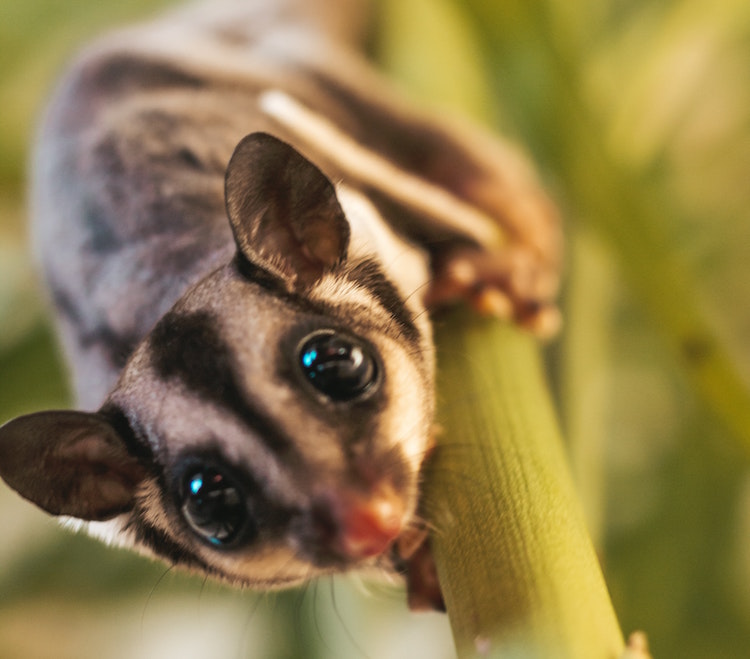What is a Sugar Glider?
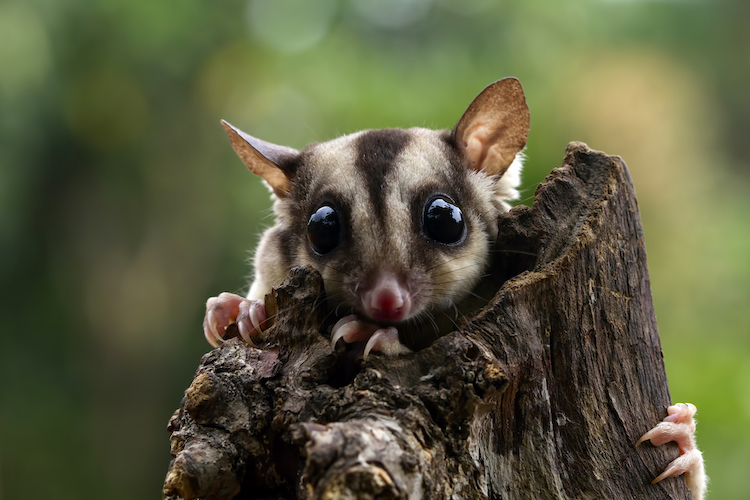
The sugar glider is a delightful, interesting, energetic, and curious animal that has gained popularity as a pet in recent years. While they resemble squirrels or rodents in terms of size and appearance, they are classified as marsupials, which makes them more similar to kangaroos, koalas, and possums. Petaurus breviceps, the scientific name for sugar gliders, means “short-headed springboard” due to their remarkable ability to leap and glide long distances.
With proper care, enrichment, and socialisation, sugar gliders can make excellent pets and bond closely with their human families.
Sugar Glider Origins
These little marsupials spend almost all of their time in trees’ branches since they are primarily arboreal. The geographic range of the sugar glider is limited to the eastern coasts of Australia, New Guinea, Tasmania, multiple surrounding islands, and parts of Indonesia.
Sugar Glider Anatomy
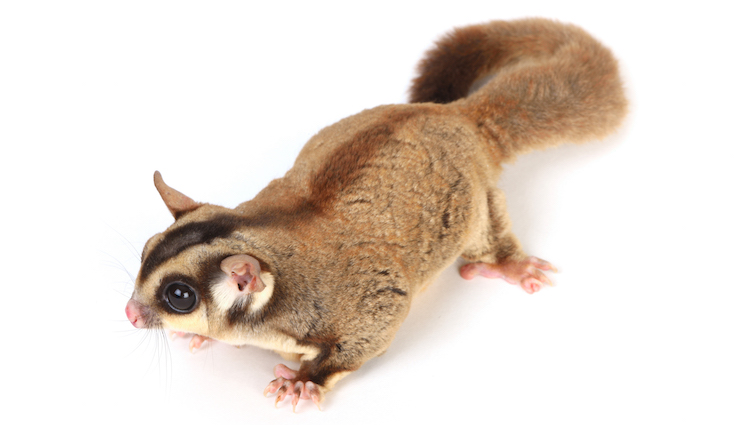
The sugar glider is a nocturnal tree-dwelling species with large eyes that help it navigate through the darkness. A unique feature of their physical appearance is the patagia, the thin membranes of skin which stretch from their wrists to their ankles. The wing-like membranes allow them to glide gracefully through the air for a distance of up to 150 feet. The sugar glider’s body measures five to six inches in length, with its tail adding another six inches (which helps them steer and maintain balance when they glide), and they only weigh around 80 to 160 grams.
The short, velvety coat of sugar gliders is mostly grey with black stripes and a white belly. They are also one of the few mammals with an opposable digit like the human thumb that helps them maintain their grip.
Sugar Glider Lifespan
Pet sugar gliders can live up to 12 or 15 years, so they are good long-term pets.
Sugar Glider Temperament and Behaviour
In the right social and training environment, sugar gliders can have personalities similar to dogs and form strong bonds with their owners. They might follow directions and even respond when called by their names. A sugar glider that has been well socialized is rarely aggressive. In fear or defense, sugar gliders may stand on their back legs, make loud noises, and charge.
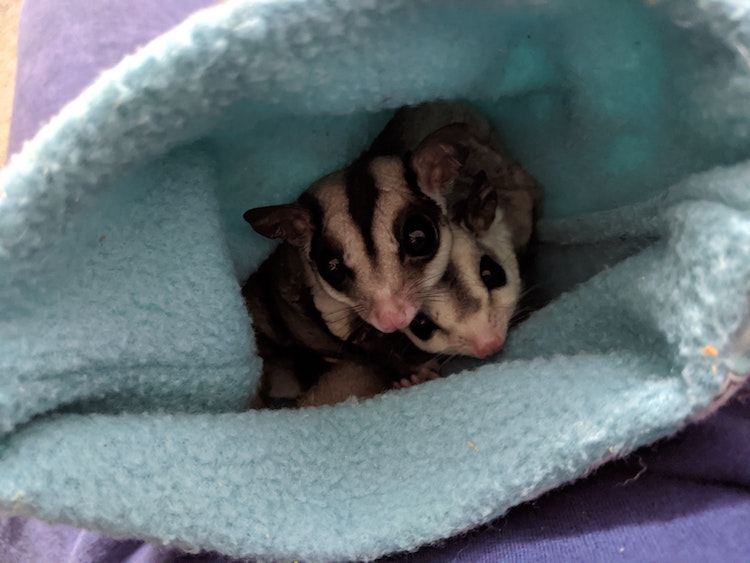
Since sugar gliders are social animals and need companionship, they bond well with their owners (especially if a bonding pouch is used).
Sugar Glider Food and Diet
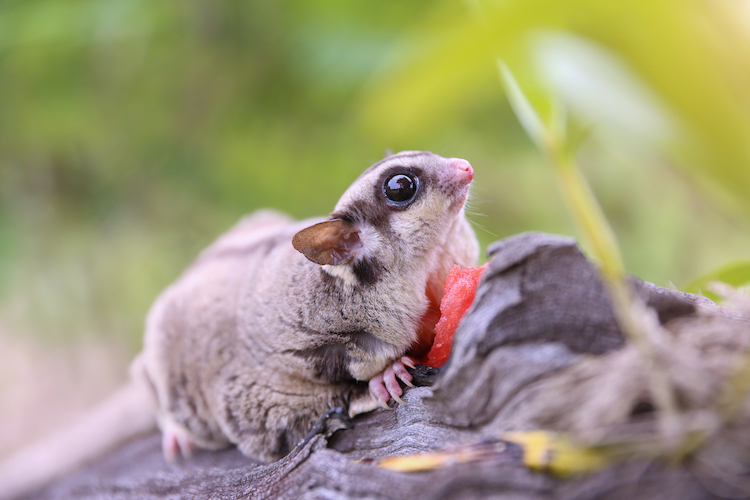
Sugar gliders eat a variety of different foods in the wild, depending on the season. Being true omnivores, they change their diet according to the season and climate. Among the food they consume are pollen, insects, larva, spiders, sap, gum, plant blossoms, and nectar. As this diet is difficult to reproduce in captivity, domesticated sugar gliders often suffer from poor nutrition.
Sugar gliders kept as pets are fed specific diets that are recommended by experts and veterinarians. These diets include a variety of foods, but an insectivore pellet should be the foundation for a well-rounded diet and it is excellent for preventing dental disease. Baby food, honey, fruits, vitamins, vegetables, and insects can all be used as a supplement to this pellet. There are prepared, pre-packaged insectivore foods for sugar gliders that can be found at pet shops and online.
Sugar Glider Health
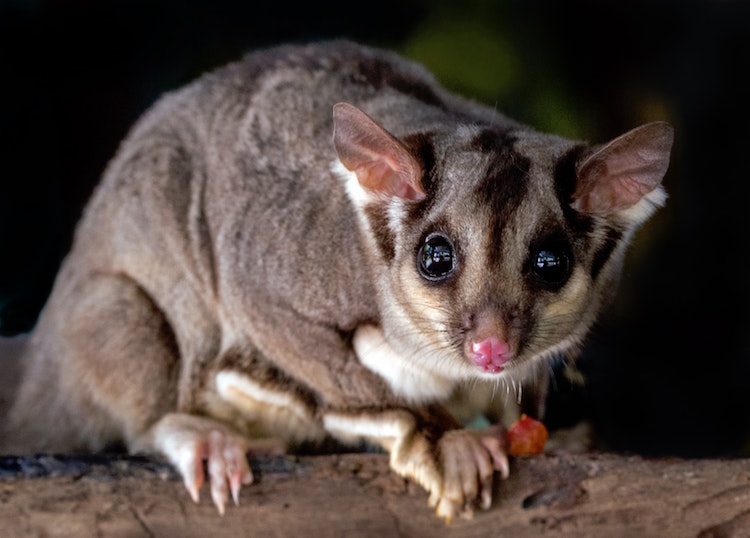
Sugar gliders in good health have bright, clear eyes and are alert. There should be no discharge or discoloration in their nose, eyes, or mouth, and their coat should be soft and smooth. A male sugar glider’s scent glands are located on the top of its head and on the back of its chest, which are often mistaken for bald spots. Sugar gliders in good health are active and inquisitive with no signs of respiratory problems or illnesses.
Download the JoJo Pets app today for exclusive news and offers at https://jojo-pets.com/
